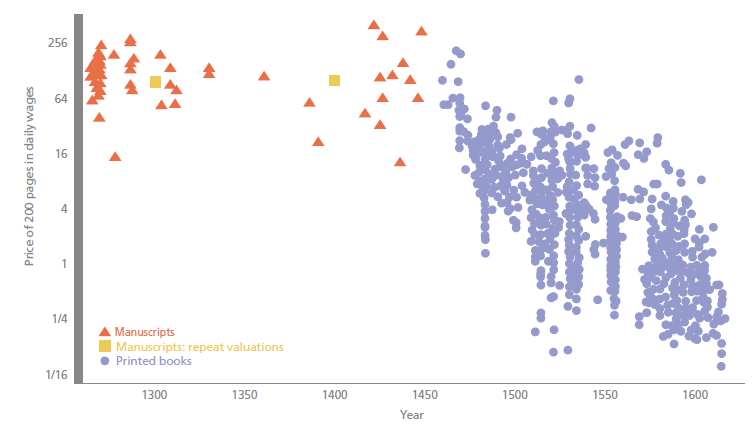https://www.epi.org/blog/teacher-strikes-blanket-the-nation-as-a-labor-of-love-meets-economic-hardships/
School districts around the country, faced with a historic shortage of teachers, should be scrambling to offer those educators higher pay and better working conditions. That's what the economics of supply and demand would dictate.
Instead, we are seeing a spread of teachers' strikes and protests, with Denver and Oakland among the latest in a series of protest waves spreading from West Virginia to Los Angeles.
The gap between the estimated number of additional teachers needed in U.S. public school classrooms and the number that are available to be hired grew from zero to over 110,000 in just the last few years.
What gives? The lack of reaction from policymakers shaping the education landscape is emblematic of a broader disrespect for teachers as professionals over time. Teachers face a curious social situation—clearly and deeply needed but demonstrably undercompensated and poorly supported at work. The spate of recent strikes suggests conditions have reached a breaking point as teachers are forced to take on second and third jobs to make ends meet, and to spend money out of their own pockets to supply classrooms.
Our new analyses for EPI suggest that breaking point is here. This week, we released the first in a series of reports on the growing teacher shortage and the working conditions and other factors behind it. Our research shows that, when we account for the shrinking share of teachers who hold credentials associated with more effective teaching, especially in high-poverty schools, the teacher shortage is worse than estimated. The reports of the series will also show that low relative pay, tough working conditions, and a lack of supports for teachers aren't isolated problems in a handful of districts but challenges being reported by teachers nationwide. The depth and breadth of the crisis shows that the education industry—i.e., the nation's state and local departments and boards of education—urgently need to rethink how they cultivate, train, recruit, and support teachers.
While teaching has long-required forgoing the additional income that teachers could earn if they pursued other careers with similar educational requirements, that income loss has grown substantially in recent years. As our colleagues Larry Mishel and Sylvia Allegretto have shown, in 1994, the pay gap between public school teachers and their comparably educated peers was negligible: teachers earned only 1.8 percent less in wages. In 2017, the teacher pay gap was 10 times that, 18.7 percent. Even accounting for teacher pensions and other benefits, which are often cited as substantially boosting educators' real compensation, the compensation gap is still large, 11.1 percent in 2017. It should come as little surprise, then, that fewer people are choosing teaching as a career and more teachers are leaving.
That kind of situation is never good news. But at a time when the number of students who need teachers is growing, and when those students are more ethnically, racially, and linguistically diverse than ever before, but also more disadvantaged in terms of poverty, it is extremely bad news. We should all be alarmed at the failure of our school systems and our country as a whole to support educators on the front lines who make it possible for students to thrive.
Teachers who successfully struck in Los Angeles earlier in the year illustrate both the scope and scale of the problem and point to first steps toward alleviating it. In L.A., the teachers rejected the district's initial offer of a raise and held out for smaller class sizes and more counselors, nurses, and librarians—resources that should not be considered "extras," but guaranteed. Their emphasis on conditions in schools as well as pay is a sign both of the sorry state in which teachers try to do hard jobs well, and of the low pay they receive to work in those circumstances. But their victory offers hope.
And more change is coming. The L.A. strike kicked off protests in Denver, Kentucky, Virginia, West Virginia (again), and Oakland. Denver teachers, long unhappy that their salaries are contingent on student test scores, are now speaking up and walking off the job. Kentucky teachers protested a pension bill that would remove teachers from the nominating process for the pension board. In Oakland, soaring housing costs and resources lost due to the spread of charters, motivated teachers' walkouts. These protests build on the momentum of the wave of strikes that started in West Virginia just about a year ago and rapidly spread to Oklahoma, North Carolina, or Arizona. Those strikes shined a much-needed spotlight on some of the lowest wages and toughest working conditions for teachers in the country. But as we learn from teachers in districts in states that are relatively "high-paying" states, like California, even relatively "high-paying" states are far from providing what teachers need.
We hope that the series of papers we will publish in the coming months will boost that spotlight and accelerate the development of solutions. As we grapple as a society with rapidly growing income and wealth disparities, those on the front lines, teachers prominent among them, deserve a central place at the table where policy solutions are discussed.
-- via my feedly newsfeed



